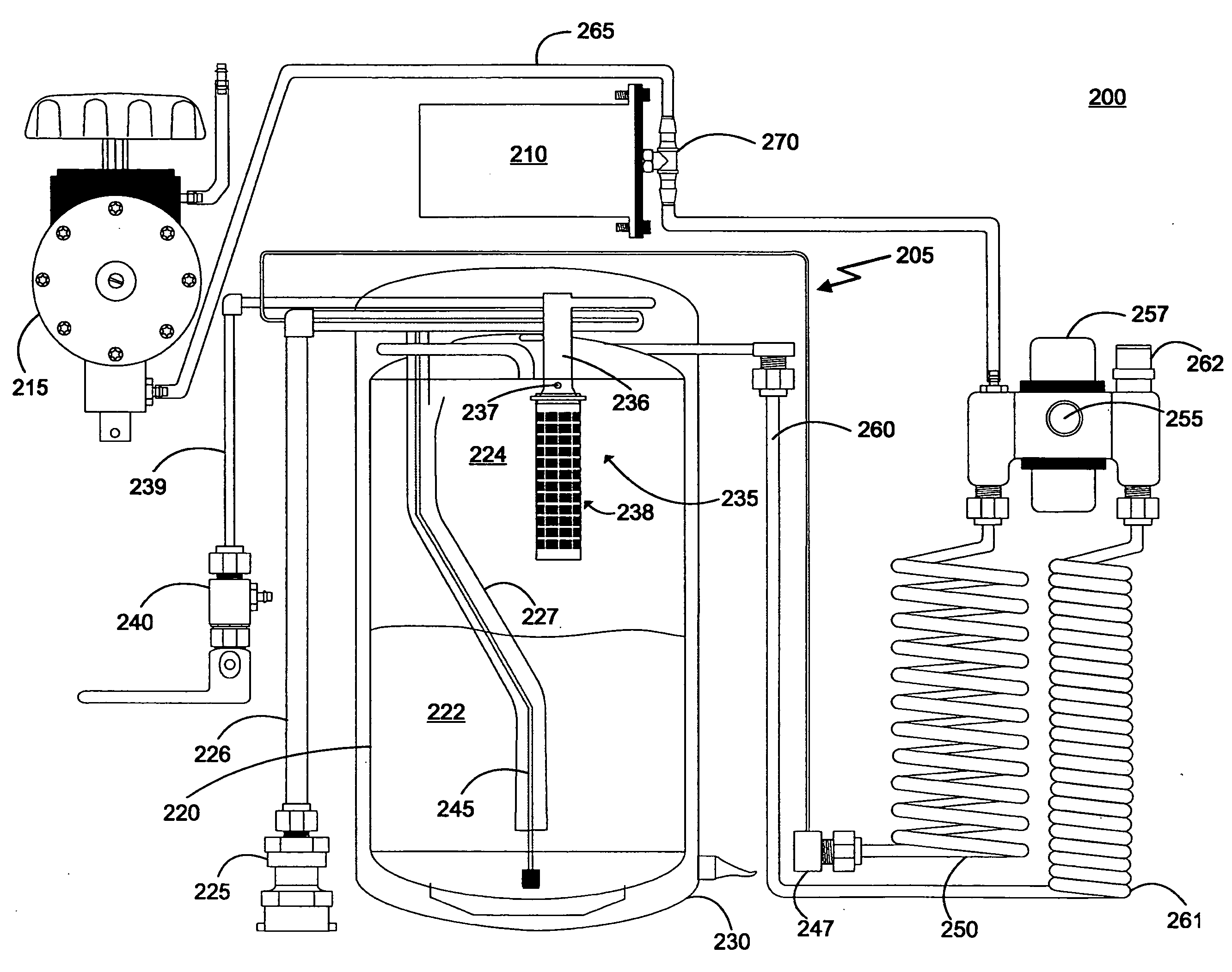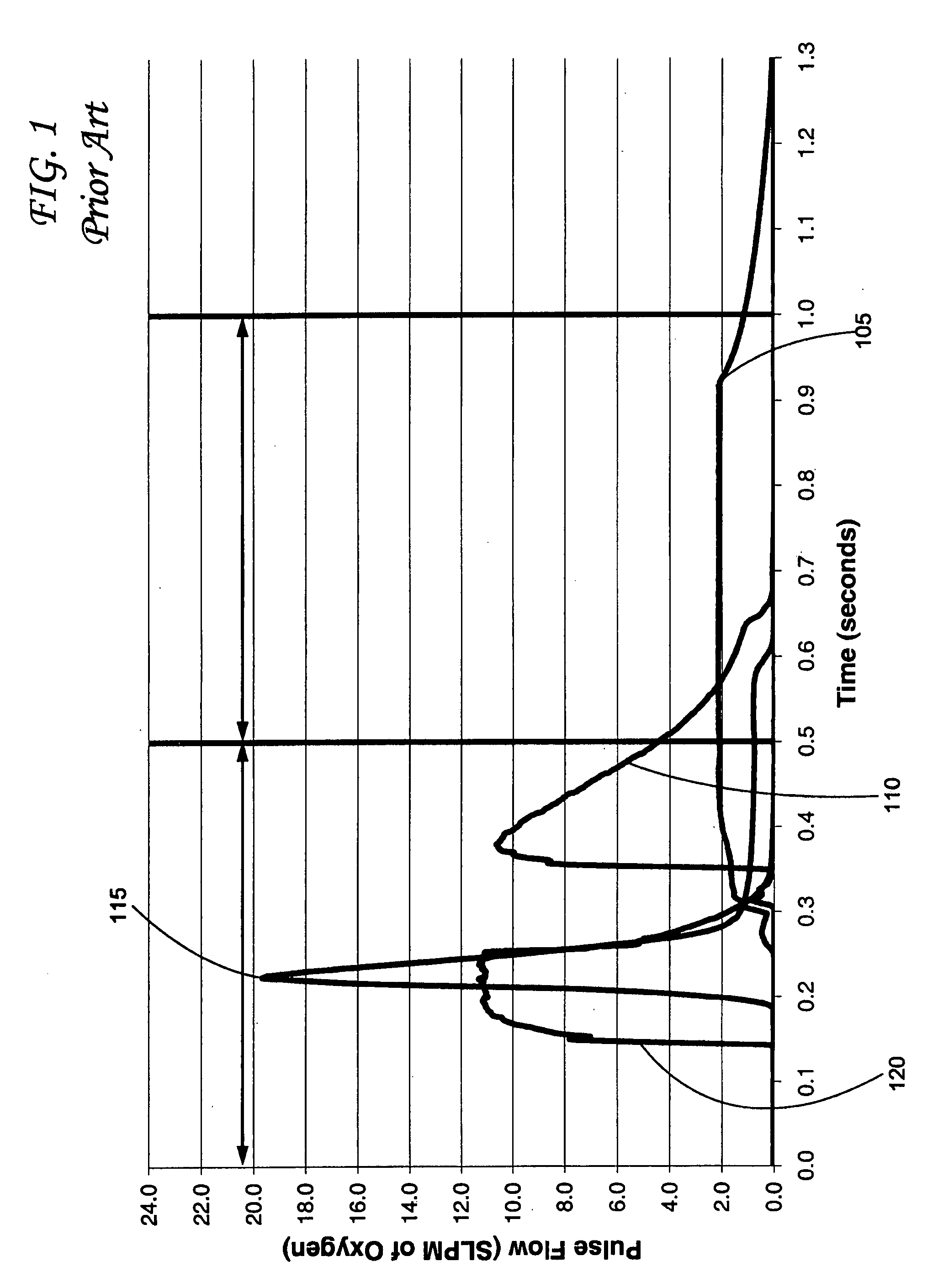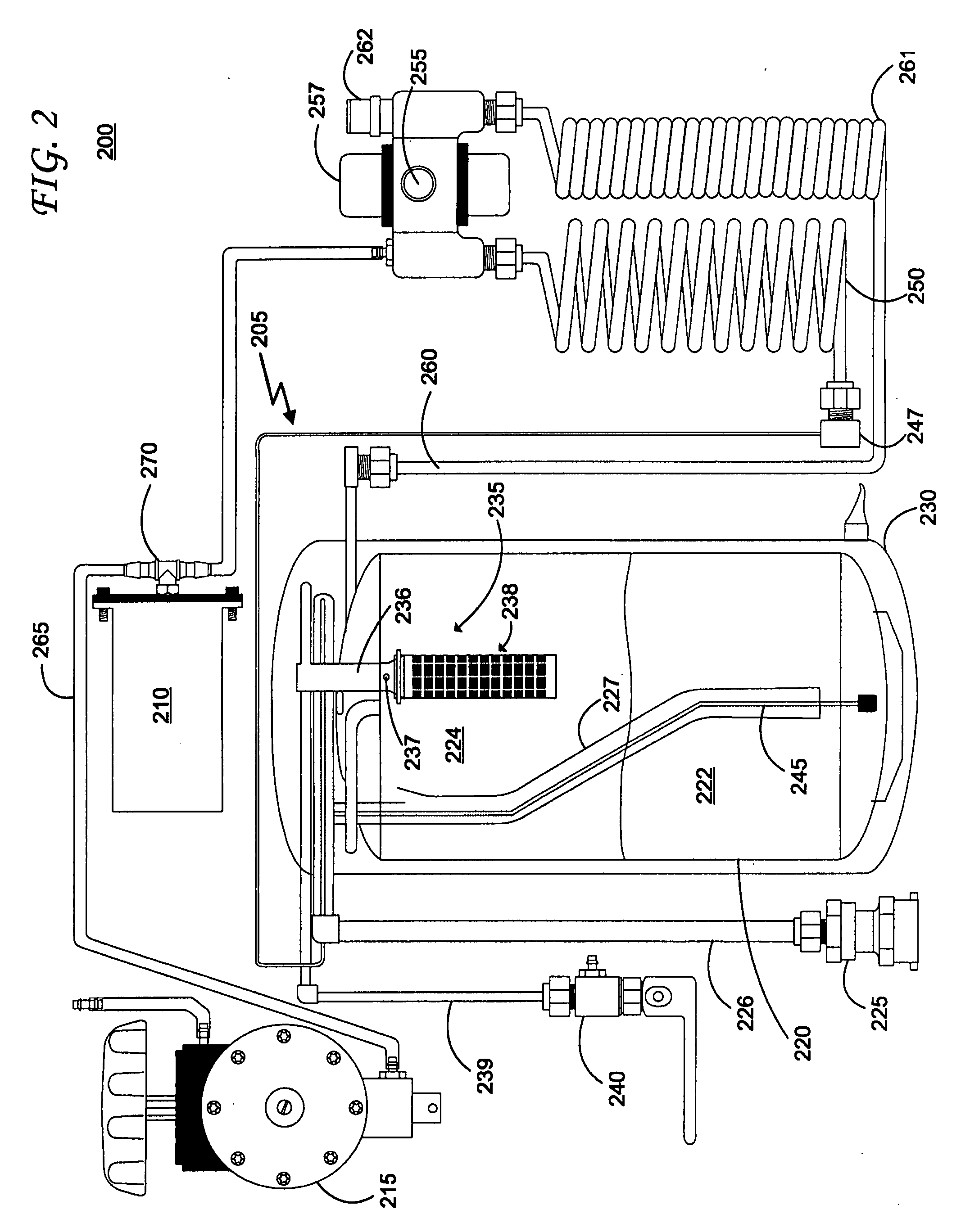Presently, there is no cure for
COPD.
While suitable for their intended purpose, oxygen concentrators are generally bulky and require access to a power source, such as an electrical outlet.
Thus, oxygen concentrators are ill-suited for portability and are not intended for use with an
ambulatory individual.
One significant
disadvantage of a compressed
oxygen system is that because the oxygen is stored under pressure, the tank may be hazardous if dropped.
In addition, small portable compressed oxygen tanks are limited in how long they will last depending on the prescribed flow rate and type of tank.
Many
first generation systems have limited utilization due to the low LOX capacity of the portable delivery apparatus and the administered LOX flow rate.
Furthermore, even when not in use, the LOX within the portable delivery apparatus evaporates at a typical rate of one pound per day, thereby emptying the portable delivery apparatus LOX supply over time.
Consequently, a
disadvantage of a conventional portable LOX
system includes the requirement that the user must return home by the end of the day to refill the portable delivery apparatus from the home stationary LOX storing canister.
Although successful in delivering
oxygen therapy at adequate levels, these LOX systems waste a significant amount of oxygen.
Therefore, for LOX systems that provide a constant flow of oxygen, the oxygen delivered at times other than the first half second of inspiration is wasted.
This is highly significant to portable LOX systems that have a
limited capacity of oxygen to supply to the patient.
Further, electronic conservers have integrated circuitry that most often has temperature range limitations.
Electronic oxygen conservers sometimes have further disadvantages related to durability and cost.
Pneumatic oxygen conservers, however, make use of the pressurized gas and its flow within the conserver to intermittently block the delivery of gas to the person.
Conventional pneumatic conservers, however, are oftentimes bulkier and generally require more complex gas lines or cannulas in order to operate.
Unfortunately, dual lumen cannulas are more expensive, bulkier, and generally not as comfortable to the patient as single lumen cannulas used in electronic conservers and many other medical devices.
Conventional pneumatic conservers suffer from a significant drawback in that while they do aid in preventing the waste of some therapeutic oxygen, they often permit and even contribute to the waste of oxygen.
As a result of these and other drawbacks, pneumatic oxygen conserving devices have not enjoyed widespread use despite certain advantages of such pneumatic conservers over electronic ones.
The various attempts to overcome the drawbacks of pneumatic conservers have had mixed results and have generated their own drawbacks and disadvantages.
While suitable for their intended purposes, the prior art
oxygen delivery systems with pneumatic oxygen conservers suffer from many drawbacks.
The most significant drawback is that the pneumatic oxygen conservers of these
oxygen delivery systems still permit oxygen to be wasted.
Thus, the conventional pneumatic oxygen conservers are incapable of conserving oxygen at a desired level.
As shown by FIG. 1, conventional oxygen delivery systems with conventional pneumatic conserving devices, while suitable for their intended purposes, are insufficient at preventing oxygen waste.
As discussed above, however, oxygen delivery systems with electronic oxygen conserving devices suffer from many of their own drawbacks, relating to
power consumption and complexity, among other issues.
 Login to View More
Login to View More  Login to View More
Login to View More 


